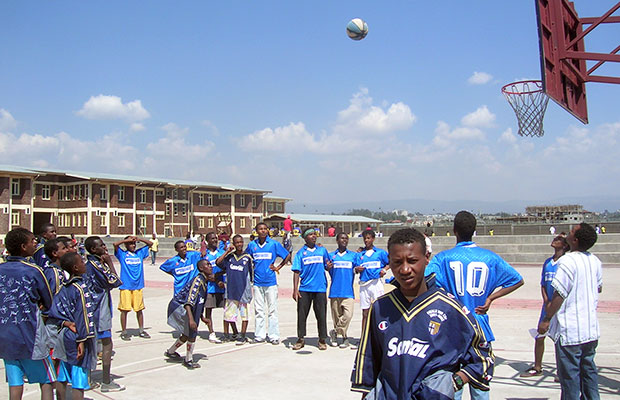
Envisioning a Brighter Future for Youth on the Streets
In Addis Ababa, Ethiopia, thousands of little girls and boys live on the streets — in gutters, under bridges, in drainage ditches or worse. Some are orphans — alone in the world, doing what they can to survive. Others are runaways, fleeing from the poverty and hunger of their rural villages. Sadly, many of them sniff glue to escape their despair. They simply cannot imagine a different, or better, existence.
“It isn’t the children’s fault that they’re on the streets,” says Father Mark Hyde, director of Salesian Missions. “Anytime this happens, it’s because society has failed them. In Addis Ababa specifically, food insecurity is high, decent housing is almost non-existent, and economic opportunities are few. Children haven’t created these situations, but they are among those who suffer the most.”
In fact, according to UNICEF, nearly 100,000 of them crowd the streets in and around the city today — and that number is expected to rise by at least 5 percent each year.
This is why the Bosco Children Project exists. On its main campus, eight dormitories offer safe shelter to as many as 160 children overnight. And, at any given time, the center offers nutritious meals, structured play, basic education, technical training opportunities and study spaces to as many as 200 more children — all of whom thrive in the supportive, family-like atmosphere they have so sorely lacked.
“We are dedicated to providing as many services as we can, to as many youth as we can,” says Father Angelo Regazzo, who works with the Salesian community in Ethiopia. “Yet we know there are so many more out there. Our goal is to meet street children where they are, and help them understand how we can help.”
To that end, the Bosco Children Project recently launched a new outreach initiative called “Come and See,” designed to introduce more youth to educational and other opportunities. Each day, the staff brings around 30 boys to the campus, where they can participate in reading and writing lessons, sports, perform light chores, and learn other useful life skills. The introductory period usually lasts one or two months. Interested children may choose to enter a more formal program where they can complete their basic education and learn a trade.
“There is never any pressure for a particular child to continue with the program,” says Fr. Mark. “In fact, it succeeds at least partially because staff respects the autonomy and free will of the boys.”
Children who choose to stay spend the next three years attending regular academic classes, learning a trade, and preparing to find long-term, meaningful work that will ensure their future economic stability. They also receive room and board — all at no cost to them.
Already, the impact of the program on the boys’ lives is clear. Among the first class of “Come and See” students, eight are attending university and have distinguished themselves as top performers.
And to think, these were street children who didn’t know how to read or write!
Our mission prepares at-risk youth for decent work and a sustainable future through education. What’s your mission?

